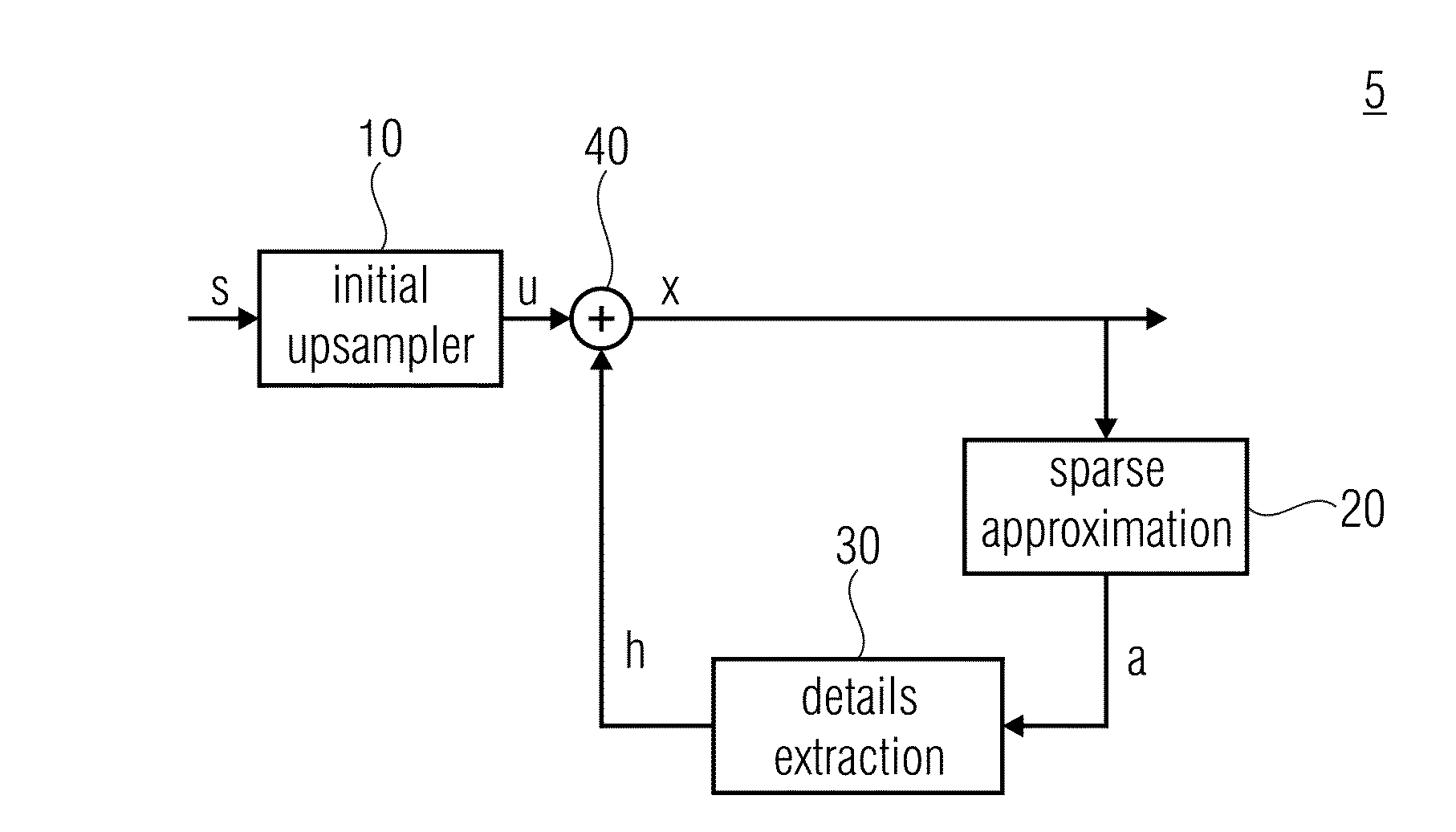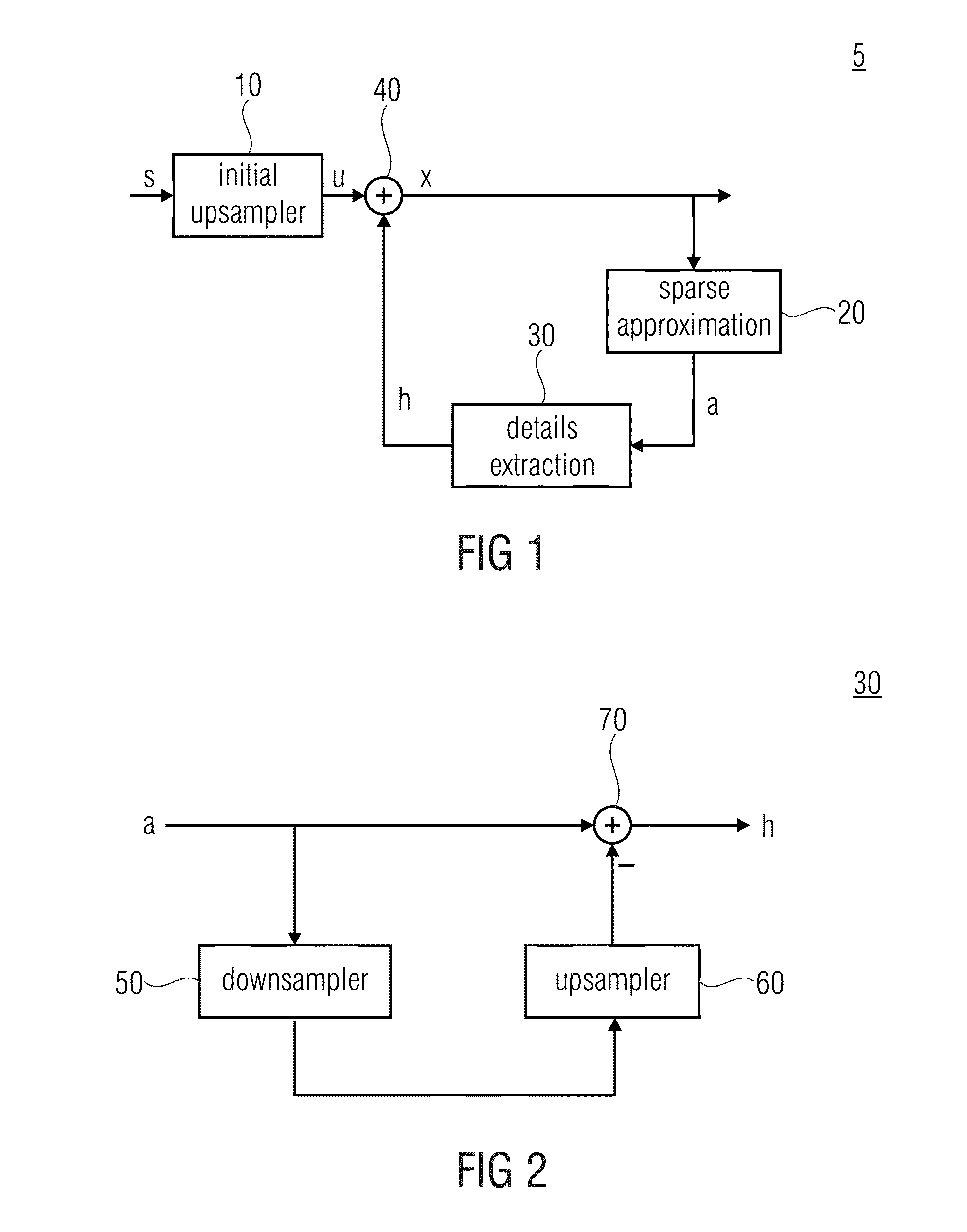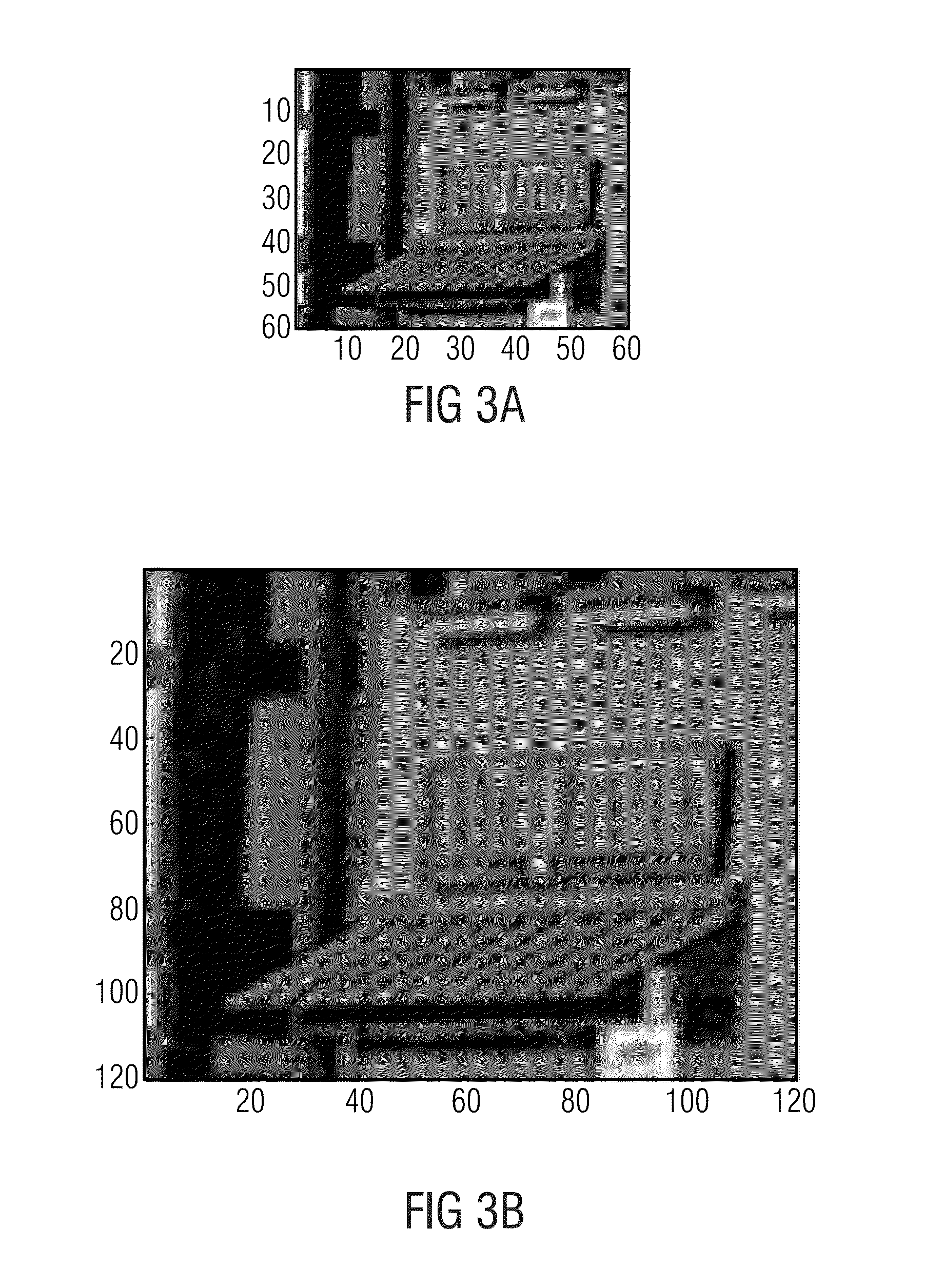Upsampling and signal enhancement
a signal enhancement and signal technology, applied in image enhancement, image analysis, instruments, etc., can solve the problems of linear models not being able to capture the fast evolving statistics around edges, the band-limitedness does not hold for most images, and the resulting hr image is blued. , to achieve the effect of reducing quality
- Summary
- Abstract
- Description
- Claims
- Application Information
AI Technical Summary
Benefits of technology
Problems solved by technology
Method used
Image
Examples
Embodiment Construction
[0023]Before the description of certain embodiments of the present application, some thoughts shall be outlined which led to the subsequently described embodiments.
[0024]First of all, it is noted that linear models like FIR filter based interpolation are faithful in interpolating the low frequency components, but distort the high frequency components in the upsampled image. Accordingly, in the embodiments outlined below, the output of such an initial interpolator is combined with detail components from a sparse approximation. For example, this may be realized by way of an iterative framework that performs the combination. The motivation to use the detailed components from a sparse approximation for signal enhancement is motivated by the fact that natural images can be sparsely represented in some domains [Olshausen1996]. The stage of sparse approximation can be viewed as approximating a signal with only a few transform coefficients, e.g. by transforming the signal to a specific doma...
PUM
 Login to View More
Login to View More Abstract
Description
Claims
Application Information
 Login to View More
Login to View More - R&D
- Intellectual Property
- Life Sciences
- Materials
- Tech Scout
- Unparalleled Data Quality
- Higher Quality Content
- 60% Fewer Hallucinations
Browse by: Latest US Patents, China's latest patents, Technical Efficacy Thesaurus, Application Domain, Technology Topic, Popular Technical Reports.
© 2025 PatSnap. All rights reserved.Legal|Privacy policy|Modern Slavery Act Transparency Statement|Sitemap|About US| Contact US: help@patsnap.com



